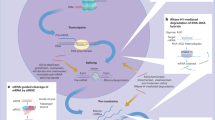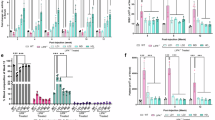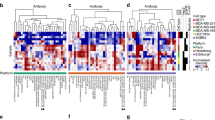Abstract
WE have failed to confirm the report1 that the injection of several hormones into rats is followed by rapid and specific alterations in the profile obtained by counter-current fractionation of “rapidly labelled RNA” from the liver. We consider that the alterations of profile described could have resulted from slight differences in the procedures for isolating RNA from experimental and control rats. In our work, we have used double labelling to eliminate the possibility of such differences: animals treated with hormones received a tritium precursor while control animals received a carbon-14 precursor and the livers were combined before isolation and fractionation of RNA.
This is a preview of subscription content, access via your institution
Access options
Subscribe to this journal
Receive 51 print issues and online access
$199.00 per year
only $3.90 per issue
Buy this article
- Purchase on SpringerLink
- Instant access to full article PDF
Prices may be subject to local taxes which are calculated during checkout
Similar content being viewed by others
References
Kidson, C., and Kirby, K. S., Nature, 203, 599 (1964).
Kidson, C., Kirby, K. S., and Ralph, R. K., J. Mol. Biol., 7, 312 (1963).
Krebs, H. A., and Henseleit, K., Hoppe-Seyl. Z. Physiol. Chem., 210, 33 (1932).
Kirby, K. S., Biochem. J., 96, 226 (1965).
Author information
Authors and Affiliations
Rights and permissions
About this article
Cite this article
LEADER, D., BARRY, J. Counter-current Distribution of Rapidly Labelled RNA from Rats treated with Hormones. Nature 215, 1374–1375 (1967). https://doi.org/10.1038/2151374a0
Received:
Issue date:
DOI: https://doi.org/10.1038/2151374a0



